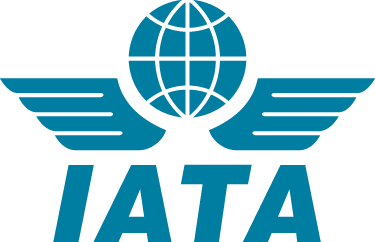
KEY POINTS May-June 2015
and the US – levels are now down 45% on 2014 highs;
Airline shares still up on a year ago, despite recent falls because of investor profit-taking
? Airline share prices fell 5% in June compared to May, but are still up 10% on a year ago. The decline in airline share prices during the recent past is due to small rallies in jet fuel prices as well as the strengthening US dollar. For US carriers, the strengthening dollar could hamper international air travel, while for non-US carriers, there could be an increase in US-dollar denominated costs. More recently, however, airline share prices have been falling because of investor profit-taking, particularly in the US.
Q1 financial results show strong profit improvement in North America and Asia Pacific
? Airline financial performance is improving strongly according to Q1 financial results. A sample of 81 airlines shows that the industry financial performance improved significantly on the year ago period at the operating and net profit level. The increase was driven by North American airlines, where consolidation and cost cutting has resulted in a significant boost to profitability and lower fuel costs. Asia Pacific airlines have also improved on a year ago. Chinese carriers have recorded solid Q1 2015 profit results, owing to strong demand and improved operational efficiency.
Fuel costs
Crude oil price prices weaken on expectations of supply increases in the US and Iran
?Crude oil prices had fallen below $50/bbl in January, the lowest price seen for the past 6 years. Since then, there have been two small rallies; the most recent was a 15% increase in May compared with the prior low in March.
?In June however, there was another decline in crude oil prices, falling 5% compared to May. The recent weakness reflects expectations of supply increases from Iran and the US. Jet fuel prices fell by 9% over the same period.
Yields
Passenger yields are weakening worldwide, reflecting the lower fuel related costs
Demand
RPKs continued to expand at trend as FTK volumes failed to improve on Q4 2014
? Air transport volumes continue to expand at a robust rate. The decline in oil prices should help support economic activity and passenger demand in 2015. In addition, recent improvements in business confidence in some advanced economies should help support growth in international travel.
?Air freight volumes fell by 0.5% in May compared to April – confirming a flattening in the growth trend that started in late 2014. This development is consistent with a trend change in world trade, particularly in emerging Asia, were trade showed a notable decline in Q1 and remains weak in Q2.
Capacity
ASK growth was robust in May while AFTKs flattened in response to weak demand
?There was a robust increase in passenger capacity in May compared to April; once again mostly on international markets (0.9% month- on-month). Carriers in all regions experienced capacity expansion, with European airlines seeing the slowest growth which is consistent with weakness in demand.
?Air freight capacity trended sideways in May compared to April, responding to the weakness in demand. Slower growth in capacity might help load factors, which have been in decline so far this year.
Growth in seats increased further in May, now in excess of the growth in demand
? Growth in available seats accelerated further in May. Although there were fewer new aircraft deliveries in May (122) compared to April (146), there was a decrease in net storage activity. More specifically, in May there were 81 aircraft going into storage, while in April that figure was much greater at 116. There were also 118 aircraft coming out of storage in May, compared to 112 in April. Growth in seats accelerated to a 10% annualized rate in May, which if sustained could put downward pressure on aircraft utilization rates.
Air freight load factors fell further while passenger loads maintained recent improvements
? Air passenger load factors are sustaining high levels, despite solid growth in capacity over recent months. Domestic load factors have shown improvement since mid-2014, supported by stronger growth in volumes. International load factors have shown slight improvement this year, after showing patches of weakness in the second half of 2014.
? Cargo load factors fell further in May compared to April. Although there was only a small increase in capacity over the month, there was a sizeable fall in volumes, which pushed load factors down further. Air freight load factors are the lowest they have been since mid-2009, on a seasonally adjusted basis.
Daphné Savard occupe le poste d’administratrice du site ou webmestre ainsi que celui de responsable des relations avec les annonceurs et les lecteurs.
Commentaires